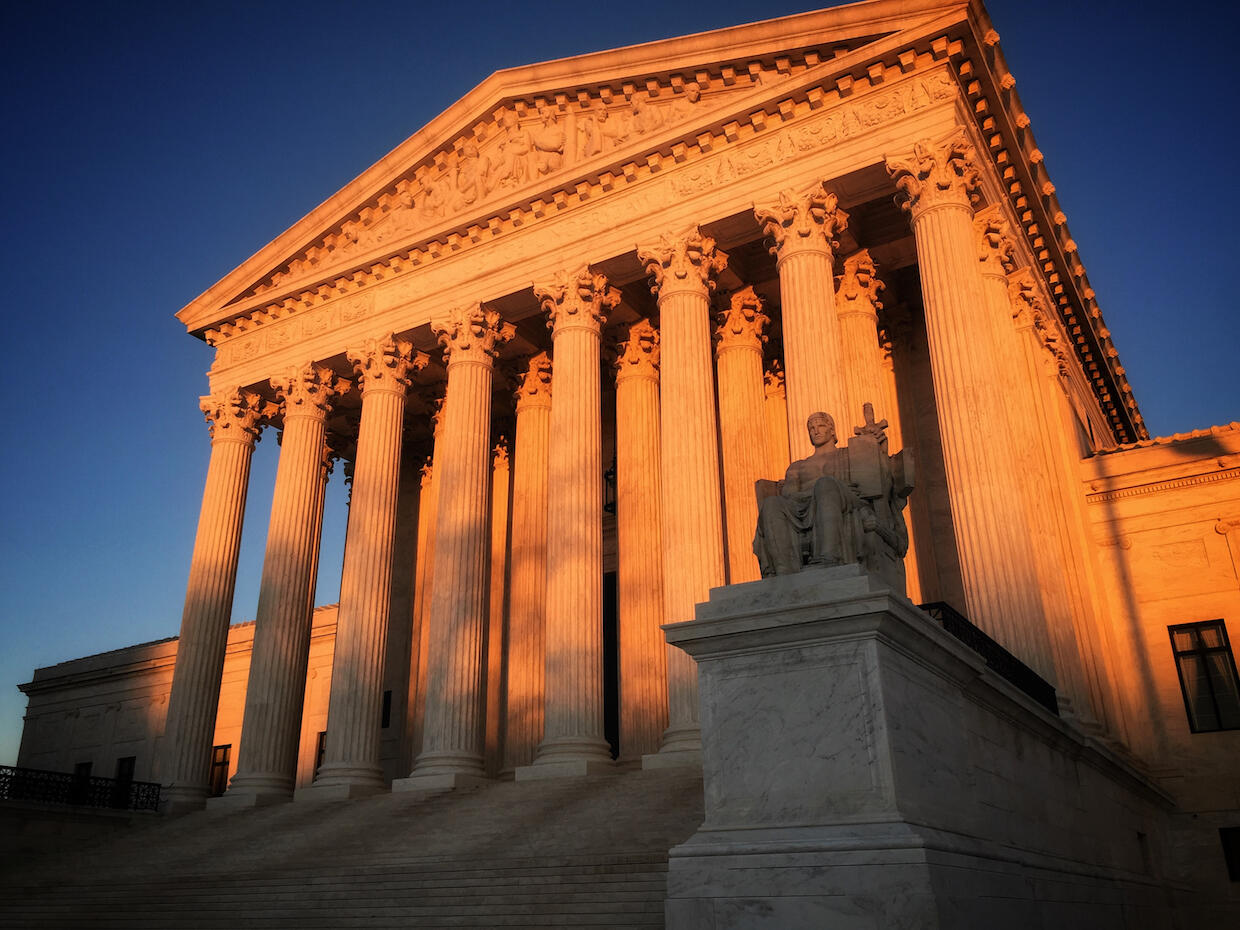
June 6, 2018
The Supreme Court’s rulings in two partisan gerrymandering cases could be a game-changer for American politics
The decisions in Whitford v. Gill and Benisek v. Lamone could affect the partisan composition of Congress for the next decade or more.
Share this story
The United States Supreme Court this month will decide two key cases that could have far-reaching consequences for the control of Congress and the nation’s state legislatures. The first case, Gill v. Whitford, tackles the practice of partisan gerrymandering, focusing on Wisconsin Republicans’ efforts to draw a statewide map that ensures their party will hold the majority of the seats in the state house in upcoming elections. The second case, Benisek v. Lamone, involves a partisan gerrymander challenge to Maryland’s congressional map, which was drawn by the Democratic governor in 2011.
Alex Keena, Ph.D., assistant professor of political science at Virginia Commonwealth University, is watching the court’s decisions closely. Keena is the co-author of “Gerrymandering in America: The House of Representatives, the Supreme Court, and the Future of Popular Sovereignty,” a book that has been cited in briefs for previous Supreme Court gerrymandering cases. Keena explained to VCU News the key points of the cases and their possible impact.

Why is the Supreme Court addressing partisan gerrymandering?
Historically, the judiciary has been very cautious about delving into political matters. In general, the court believes that political issues are best settled by elections. But partisan gerrymandering presents a “catch 22” — if elections are the only solution to settling “political” matters, then it is effectively impossible to challenge unfair districting maps designed to protect politicians from losing elections.
Since the 1960s, the Supreme Court has recognized that partisan gerrymandering is an issue that the judiciary probably ought to address, but it has not agreed on a legal standard for identifying what constitutes an impermissible partisan gerrymander, nor how to apply such a standard in practice.
What is different about Whitford and Benisek?
The first case the court heard, Gill v. Whitford, involves a challenge to a Wisconsin state legislative district map that Democratic voters claim undermines their ability to use the electoral process to elect candidates of their choice. What is unique about this case is that it uses a First Amendment “free association” claim to challenge partisan gerrymandering, in addition to an “Equal Protection” challenge. In other words, they claim that, by drawing the district lines to give Republican candidates an advantage statewide, the Republican-controlled Wisconsin legislature unconstitutionally violated the ability of Democratic voters to associate with the party of their choice. This is an important strategy because the current conservative-leaning Supreme Court has been sympathetic to First Amendment challenges.
The court also recent heard a second partisan gerrymandering case, Benisek v. Lamone, which represents a challenge of Maryland’s 6th congressional district, which Republicans charge was unfairly drawn to favor Democrats. While this case is different in some respects — it addresses only one district, as opposed to the entire map — it is important because it involves a Republican challenge to a Democratic-drawn map.
In general, the court believes that political issues are best settled by elections. But partisan gerrymandering presents a “catch 22” — if elections are the only solution to settling “political” matters, then it is effectively impossible to challenge unfair districting maps designed to protect politicians from losing elections.
Why are these cases important?
The Whitford case represents the first time a federal court struck down a districting plan as an unconstitutional partisan gerrymander. In reviewing Whitford and Banisek, the Supreme Court has the power to set new standards for identifying and challenging unconstitutional partisan gerrymanders that could have far-reaching implications for national politics. If the court recognizes that partisan gerrymandering is a violation of free speech rights, then potentially dozens of states may need to redraw their district maps. Indeed, as my co-authors and I show in our book, “Gerrymandering in America,” nearly two dozen states have drawn congressional maps that are biased in favor of Republicans, while one state (Maryland) has drawn a pro-Democratic gerrymander. This means that these maps could be vulnerable to legal challenges, and this could throw the 2018 and 2020 U.S. House elections into upheaval.
On the other hand, the Supreme Court could overturn the lower court’s ruling, or it could issue a very narrow decision, in which case the status quo would prevail. This would mean that, like today, there is no apparent remedy for challenging partisan gerrymandering in the courts. This would ensure that, regardless of what happens this November, the Republicans in Congress would be insulated from steep losses if we in fact see a wave of support for Democratic candidates. But perhaps more importantly, this would mean that statewide elections in 2020 — which will determine who gets to control redistricting during the 2021 redistricting cycle — would feature candidates running in state-level districts that may also be biased in favor of one party, and that partisan gerrymandering will continue unrestricted into the future. In short, the Supreme Court’s decision may affect the partisan composition of Congress for the next decade and potentially beyond.
Subscribe to VCU News
Subscribe to VCU News at newsletter.vcu.edu and receive a selection of stories, videos, photos, news clips and event listings in your inbox.











